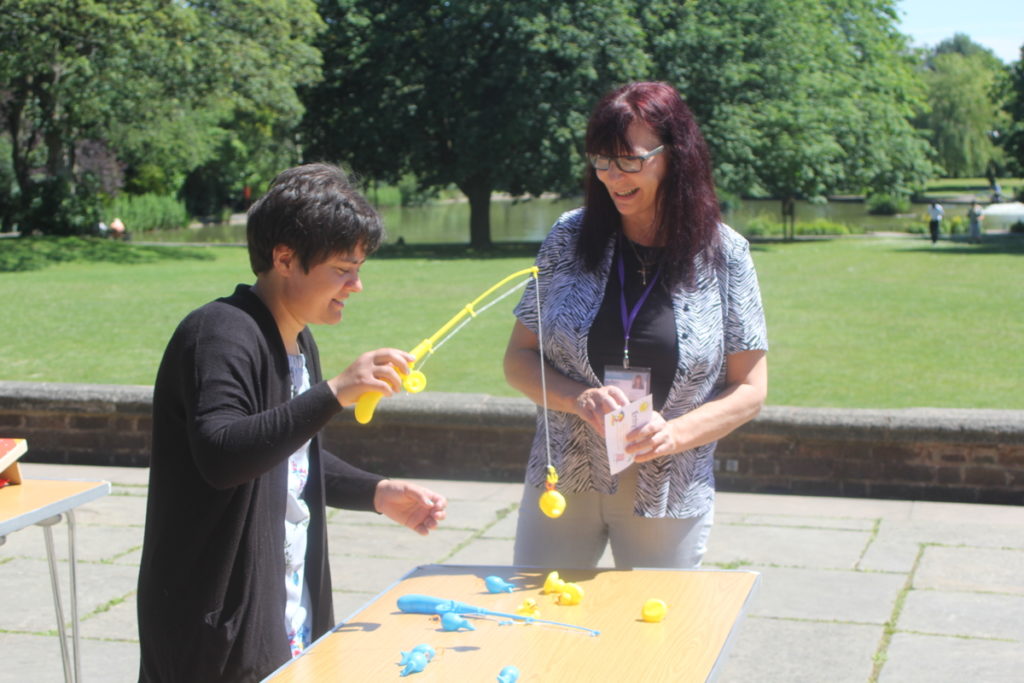Understanding Autism
What is Autism?
Being autistic means that your brain works differently from non-autistic (often referred to as neurotypical) people. This influences the way a person experiences their senses, how they communicate and interact with others, and how they think and process information. But autism is not an illness: autistic people are different, not deficient!
Autism is not related to IQ or intellectual ability. Someone might be autistic with an associated learning disability, or they might not.

A Spectrum
Autism is referred to as a spectrum but that doesn’t mean that everyone is ‘a little bit autistic’ or that one person is ‘more severely autistic’ than another. You are either autistic or not. The point of an autistic spectrum is that each autistic person will have unique strengths and challenges in different areas of life. So we prefer not to use terms such as ‘mild’ or ‘severe’ autism, or ‘high’ or ‘low functioning’ labels.
Communication and Interaction
Autistic people may communicate differently from other people. Some may be non-speaking; some may experience situational mutism (can’t speak in some environments or when they’re anxious or overwhelmed); some may find it easier to communicate in a more visual way.
Autistic people may not understand many of the unspoken social rules we follow. They may have a different understanding of body language and non-verbal communication. However, this does not mean that autistic people are antisocial or unfriendly. They almost always care deeply about other people and form strong friendships with those who take the time to get to know them.
Senses
Autistic people process information from all their senses differently from non-autistic people.
Each autistic person may respond to sensory input much more strongly or much less strongly than a neurotypical person would. As a result, they may need a different amount of sensory input than other people in order to feel comfortable. For example, an autistic person might find bright lights or loud noises overwhelming or even physically painful. Others may need to move more or in a different way in order to feel right in their body.
It’s important to remember that all autistic people are different and this doesn’t mean that every autistic person experiences sensory input in the same way.

Thinking and Processing
- Autistic people might need a little more time to think and process information, especially if they are overwhelmed with sensory and other input.
- At the same time, an autistic person might be capable of extremely sophisticated thought if they are given time and space to reflect and freedom to think in the way that suits them best.
- An autistic person might focus on a single strong interest for their whole life, or they might have many interests.
- Autistic people may get more anxious or stressed due to the burden of masking (see below) or from trying to understand the unwritten rules in neurotypical society.
- When anxious, stressed or over-thinking, sensory differences may be more severe.

Masking
Masking is something that many autistic people do to hide parts of themselves, in order to fit into society. It can involve repressing their autistic traits, copying neurotypical social norms, and performing a certain way so they don’t stand out. This is often exhausting. An autistic person may feel that they can rarely be their authentic autistic self and need to pretend to be someone else in order to be accepted.
Meltdown and Shutdown
Meltdown is when the overload an autistic person experiences each day becomes unmanageable for them. They may show extremely distressed behaviour (meltdown) or partially or completely withdraw from the world around them (shutdown).
Someone in meltdown or shutdown may not be aware of, or able to control their behaviour. They may feel hugely guilty or ashamed once the meltdown or shutdown is over, and they will almost certainly need plenty of time and space to recover afterwards.
Tips to help an Autistic person
- Remember that every autistic person is different. Get to know them and find out what works for them.
- Assume competence and ask them what they need, think or want.
- Allow for processing time when communicating.
- If necessary, keep language simple or try wording things in a different way.
- Don’t insist on eye contact or other social rules.
- Be flexible in your approach.
- Structure, routine and predictability may help to reduce anxiety.
- Some people benefit from visual support such as symbols, pictures and photographs to help understand instructions or the world around them.
- Look at the environment to see if it is creating difficulties for autistic people. For example, are the lights too bright? Is it too loud? Are there too many people or too many demands? Think about whether you can change anything to make it more comfortable.
- Try to pre-warn and prepare for big changes. Remember that what we assume is a small change may be very significant to someone else.
- Use things they enjoy, or special interests, to encourage engagement.
- Allow plenty of recovery time from stressful situations and social interaction.

More information